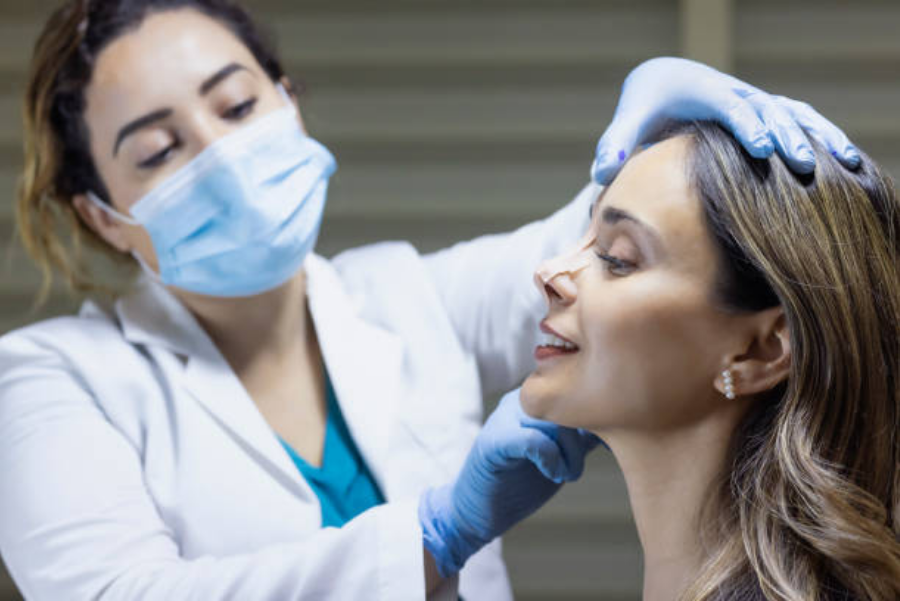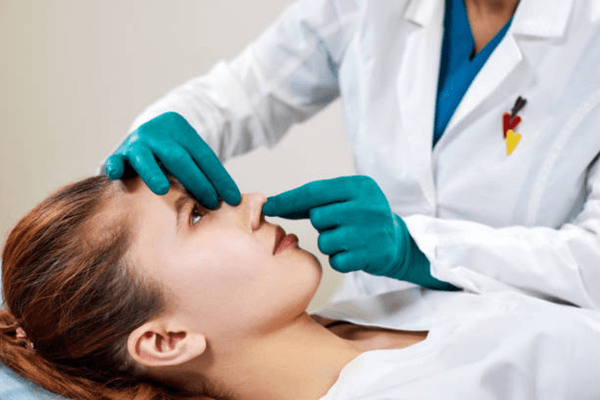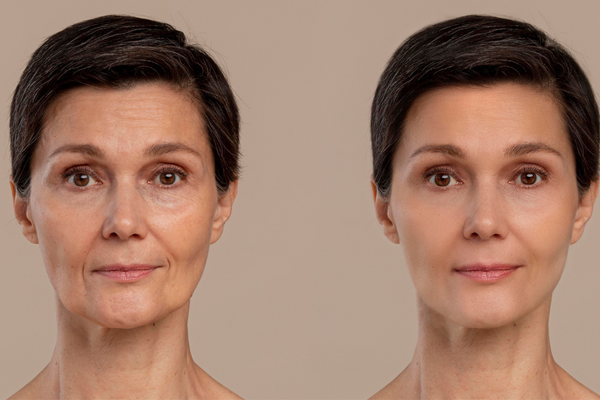The Importance of Stitches After Rhinoplasty
The stitching techniques used after rhinoplasty are a crucial factor directly affecting the success of the surgery and the recovery process. Proper placement of stitches supports the new shape of the nose while minimizing scarring. Since this is an aesthetic procedure, the stitches must be thin and delicate to maintain the aesthetic appearance and reduce the risk of infection. Adhering to the doctor’s care instructions and attending regular check-ups is essential.Stitch Scars After Rhinoplasty
Rhinoplasty is performed through incisions made either internally or externally. With proper care and attention to the surgeon’s success and other factors, the risk of stitch scars can be eliminated. Here are the key considerations during the post-rhinoplasty stitching process:- The expertise of your surgeon; a highly skilled surgeon will use advanced techniques, ensuring better aesthetic results. Choose an experienced doctor.
- If incisions are made according to the structure of the nose, the chances of smooth healing are higher. Incorrect application increases the risk of scarring.
- If the patient’s skin is thick, the wound may take longer to heal. However, for patients with thin skin, the healing process is shorter, and the likelihood of scarring is lower.
- Using scar creams and lotions.
- Preventing scabbing of the wound.
- Paying attention to the care of wounds and stitches.
- Preventing stitches from becoming infected.
- Maintaining proper nutrition and hydration.
- Using antibiotic creams as directed.
- Applying sunscreen and avoiding sun exposure.
What Are the Types of Stitch Scars from Rhinoplasty Surgery?
Stitches used in rhinoplasty are categorized as absorbable and non-absorbable, depending on the surgical technique and the surgeon’s preferences. Each type has specific advantages and uses:- Absorbable Stitches
- Non-Absorbable Stitches
How Long After Rhinoplasty Do Stitches Come Out?
The time required for stitches to be removed after rhinoplasty depends on the type of stitches used, the extent of the surgery, and the patient’s healing rate. Non-absorbable stitches are typically removed 7 to 14 days after surgery by the doctor. Absorbable stitches, commonly used for internal nasal incisions, are naturally absorbed by the body and do not need removal. Proper wound care ensures minimal scarring and enhances aesthetic outcomes.
Things to Consider to Avoid Stitch Marks After Rhinoplasty
Regardless of whether the rhinoplasty procedure is open or closed, there are crucial post-operative considerations to prevent stitch marks:- Follow your doctor’s instructions carefully. The doctor will guide the process effectively.
- Proper wound care reduces the risk of scarring. Use the creams, lotions, and medications prescribed by your doctor. Applying antibiotic ointments can prevent infections and help the wound heal quickly without leaving scars.
- Use scar creams and lotions to help lighten scars and increase skin elasticity, reducing scarring risk. Only use products recommended by your doctor.
- Maintain a healthy diet and drink plenty of water. Proper hydration supports skin health and speeds up recovery.
- Avoid sun exposure for a prolonged period after surgery. Use sunscreen and, if necessary, wear a hat or carry a sunshade to protect the area from UV rays.
- After stitches are removed, avoid injuries or trauma to the nasal area.
- Avoid smoking and alcohol, as they slow down the healing process and negatively affect skin health. Prolonged healing increases the risk of permanent scars.
- Wait for scars to fade naturally. Avoid early interventions like laser treatments without consulting your doctor.
How To Take Care of Rhinoplasty Stitches?
Proper care routines are essential after rhinoplasty to promote healthy healing of stitches. Follow these steps for post-rhinoplasty stitch care:- Apply a cold compress during the first 48 hours to reduce swelling and minimize tension around the stitches.
- Keep your head elevated using 2–3 pillows to reduce swelling and discomfort.
- Avoid cleaning the inside of your nose or blowing your nose until your doctor permits. Later, use a saline spray 5–6 times a day to keep the nasal area moist.
- Moisturize the stitches and surrounding area with petroleum jelly or doctor-recommended ointments.
- Prevent scabbing by using hydrogen peroxide as directed by your doctor.
What Are the Signs That Stitches Are Healing?
The healing process varies depending on the patient and the type of surgery. Signs that stitches are healing include:- The average healing time for stitches is 1–2 weeks, during which the skin closes and incisions heal.
- Itching in the wound area can be a sign of healing, but it’s important to ensure it’s not due to an infection.
- The skin may change color during the healing process, with bruises fading over time.
- For absorbable stitches, healing is evident as the stitches dissolve. For non-absorbable stitches, they may appear looser as the skin heals.
FAQ
The first 48 hours after nose surgery are very important. If you apply what needs to be done in the first 48 hours, it is much easier afterwards. Therefore, it is useful to spend the first two days resting and following the doctor’s instructions.
In rhinoplasty, some stitches are dissolvable and some need to be removed. Stitch removal also differs according to the rhinoplasty surgery preferred by the doctor. Dissolvable stitches do not need to be removed and disappear in the body over time. However, stitches that do not dissolve must be removed. Your doctor will remove your stitches according to the healing condition. You will not feel any pain or soreness during the removal of nasal stitches after rhinoplasty. The procedure is simple and takes a short time.
This issue is completely related to the success of the doctor, the type of surgery, the genetic structure of the person, the thickness of the skin and postoperative care. In closed rhinoplasty surgery, there are no stitches to be seen from the outside. Therefore, there is no stitch scar in closed rhinoplasty surgery. In open rhinoplasty surgery, the degree of scarring may vary according to the above-mentioned factors. If postoperative care is done correctly, the scar will fade and become indistinct over time.
You may feel discomfort from the stitches at first. Blood or fluid leakage from the stitches may cause itching. In addition, stitches that begin to heal also cause itching over time.
There is a difference between returning to normal life and restoring the nose to its former appearance. After rhinoplasty, you can return to working life within 15 days at the latest, depending on the type of surgery. However, the nose needs to settle to look normal. This covers a period of time ranging from 6 months to 1 year.
Letting the stitches breathe contributes to healing. Never closing the stitches and dressing them at the times specified by the doctor improves the stitches.
Stitches do not worsen the scar. If the wound is properly cared for and scabbing is prevented, there will be no scarring.
If there is an abnormal pain in the surgical area after rhinoplasty, you may suspect an infection. You should also pay attention to redness and swelling following this symptom. If there is a discharge of different color and intensity from the wound site, inflammation is suspected. If you notice pus or discharge, you should see a doctor as soon as possible. There are other symptoms of infection that follow these symptoms. These include difficulty breathing, feeling weak and tired, and an increase in body temperature different from normal and fever.
It is recommended not to take a shower for the first 2 days after surgery. Hot baths and tilting the head forward increase nasal pressure. This damages the surgical site and increases the risk of bleeding. Showering with stitches is possible after 2 days. You can take a shower with your head tilted back. After 1 week, you can take a bath, provided that it is not too hot.





